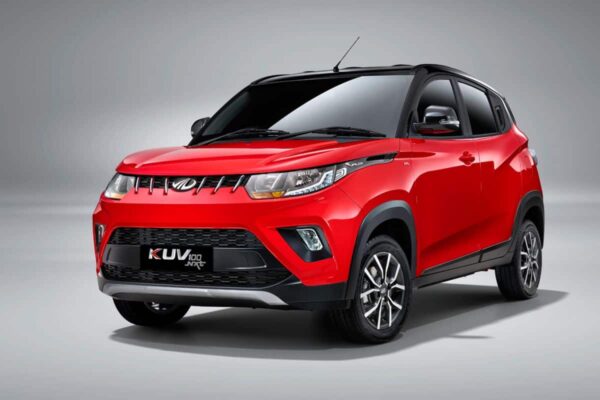Top Upcoming Electric Cars in India 2022
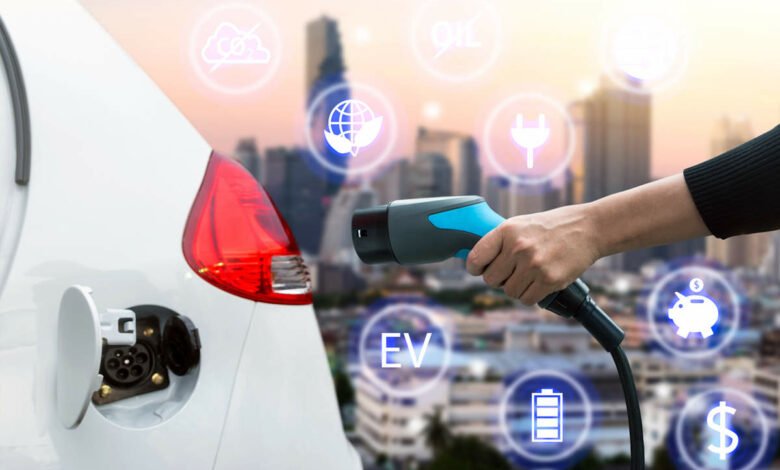
The world is on the edge of switching from conventional fuel vehicles to electric cars, and India is following suit at a rapid speed. The big automakers are accelerating their research and development efforts to build more electric vehicles than ever.
The global automobile industry is demonstrating its intents and efforts to transition to green energy. The two-wheeler industry in India has witnessed significant growth, with the Ola electric scooter being one of the most innovative debuts. Not only that, but the four-wheeler segment, while still in its infancy, has grown in popularity as Tesla prepares to enter India. One of the more encouraging outlooks we can provide for the New Year is the likelihood of increased EV adoption, driven by a flurry of new EV models from all of the major vehicle manufacturers.
Electric vehicles are projected to be accessible in 2022
When producing this list, we had to take a moment to appreciate how huge it truly is and how influential so many of these electric vehicles might be to consumers in 2022.
Some may be starting to spread out to customers now as we close the book on 2021, but these are 2022/2023 models that (should) be accessible to consumers within the next year.
To make things easier, they are organized alphabetically by the automaker. Furthermore, we’re not here to pick favourites; rather, we’re here to excite you about all of the EV possibilities that will soon be accessible to you.
Vehicles with zero emissions are the way of the future
Vehicles with zero emissions are essential, both for the environment and to offset rising fuel costs. Among the various vehicles on the market, BEVs (battery-operated electric vehicles) are the most sought after due to their practical benefits as well as cost-effectiveness.
Electric cars are not only smart and modern, but they also provide a multitude of reasons to convert from fossil fuel-powered automobiles. The Indian EV industry has risen tremendously in recent years, owing to an ever-expanding ecosystem, favourable government policies, and subsidies to both end-users and manufacturers.
This is why we have brands like Tata leading the EV race and trying to expand their portfolio by introducing more vehicles. Other automakers, such as Hyundai and MG Motors, are expanding their product range as well. Soon, brands such as Mahindra, Renault, and others will launch electric vehicles in India.
However, in order to accelerate the concept of sustainable vehicles, we still require more variety in terms of design, models with a higher range, and automobiles that are affordable.
The growing popularity and sales of electric vehicles in India have spurred automakers to plan a slew of vehicle launches for the second half of the year. Tata released the new long-range Nexon EV Max in the first half of 2022, while BMW debuted the i4 electric vehicle at an introductory price of Rs 69.90 lakh. Kia, a South Korean automaker, released the Kia EV6 on June 2 for Rs 59.9 lakh (ex-showroom). The first 100 units have already been sold by the company.
Here’s a look at the other electric car scheduled to be released in the second half of this year- as a result, we created this list of forthcoming electric cars to keep an eye out for.
-
Hyundai Ioniq 5: Hyundai has stated that the Hyundai Ioniq 5, which is based on the same E-GMP platform as the Kia EV6, will be available in India later this year. The hatchback will be manufactured in India. The Ioniq 5 will most likely have two battery options: 58 kWh and 77.8 kWh. On a full charge, the automobile is said to have a range of 507 kilometres. Because it would be produced in India, the automobile might be as little as Rs 45 lakh.
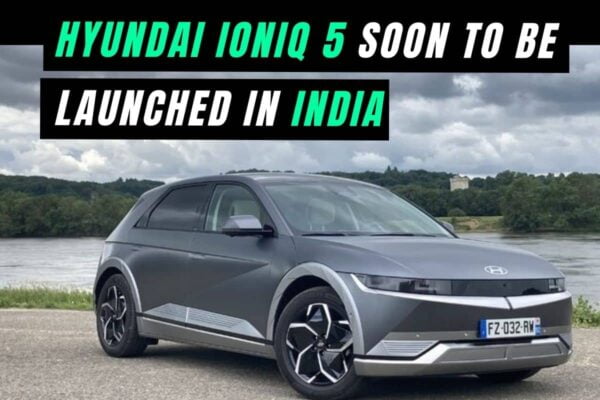
- Volvo XC40 Recharge: The XC40 Recharge electric car, based on the Volvo XC40 SUV, was meant to be released last year but has now been pushed back to July 2022. The XC40 Recharge will have dual motors and a 78 kWh battery pack. The two motors have a combined output of 408 horsepower and 600 Nm of peak torque. The car can reach a top speed of 180 km/h. On a single charge, it has a range of 418 kilometres. The car would be priced from Rs 75 lakh onwards.
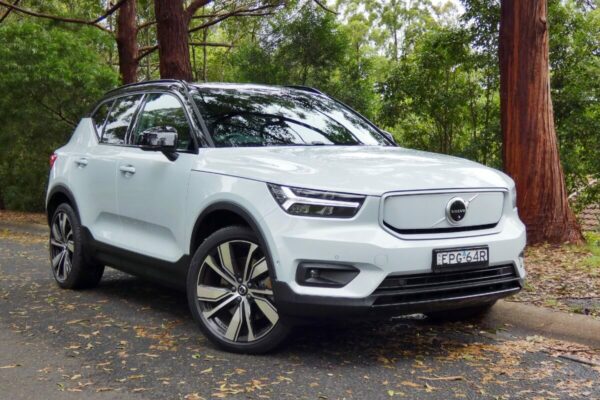
- The Mercedes-Benz EQS: It is expected to be released by the end of the year. According to Money control, it will be available in two trim levels: EQS 450+ and EQS 580 4MATIC. The EQS 450+ will be powered by a single RWD motor with 328 horsepower and 568 Nm of torque. The 580 4MATIC will be powered by two electric motors that produce a combined maximum output of 516 horsepower and peak torque of 855 Nm. The EQS will be built locally at the Mercedes’ Chakan plant.
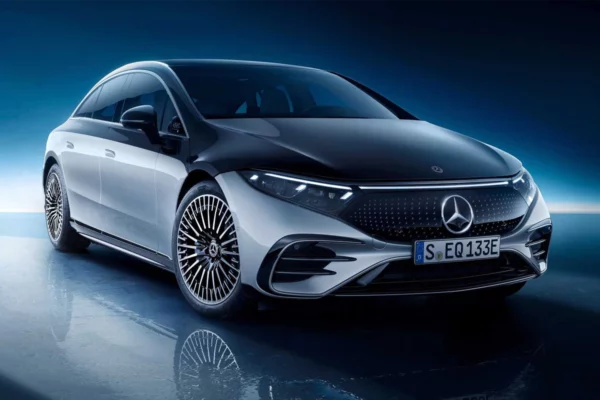
- Tata Altroz EV: Following the Nexon EV Max, Tata is expected to debut the Altroz EV, which was shown at the 2020 Auto Show. Altroz EV is projected to have the same powertrain as the Nexon EV regular model. The Nexon EV’s 30.2 kWh battery pack, which powers a single 129 hp electric motor, may be changed in the Altroz EV. The good news is that the car would most likely cost between Rs 10 and Rs 11 lakh.
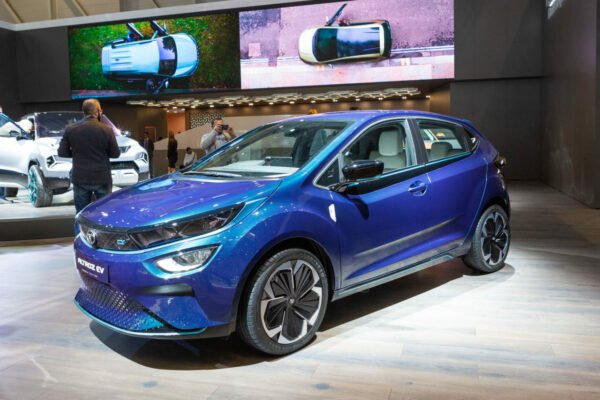
- Tata Tiago EV: Tata has not yet confirmed the Tata Tiago EV’s launch date, despite the fact that it was displayed at the 2018 Auto Expo. The car will most likely be driven by the same motor as the Tigor EV, which has a 26 kWh battery pack and an electric motor with 74 hp of maximum output and 170 Nm of torque. The Tiago EV is likely to cost between Rs 8 and 10 lakh.
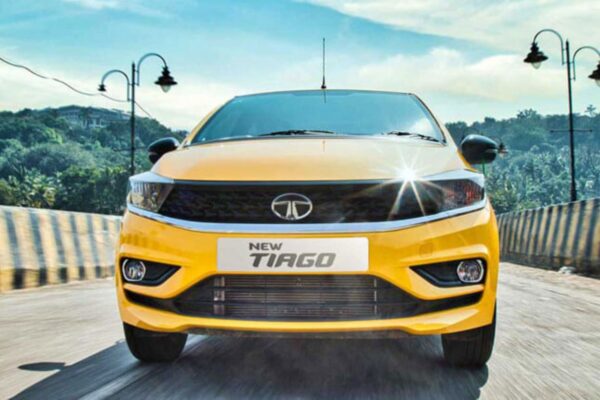
- Mahindra eKUV100: The Mahindra eKUV100 made its debut at the 2020 Auto Expo. Following its launch, the eKUV100 is expected to become India’s most affordable electric vehicle, with a price tag of less than Rs 10 lakh.
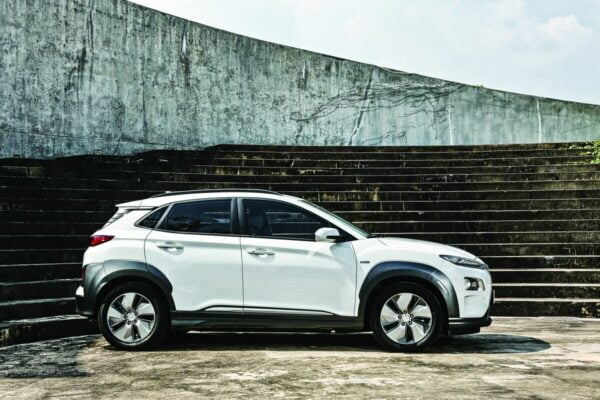
-
Hyundai Kona Electric facelift: The Hyundai Kona Electric was launched in India for the first time in 2019. The automobile had its first international update in 2020 and is now on its way to India. The Kona Electric makeover will have a fresh design but mechanical changes. The current Kona electric is powered by a 39.2 kWh battery and a 136 horsepower motor. On a single charge, the engine has a range of 304 kilometres. In the overseas market, however, the SUV features a larger 64 kWh battery pack and a 204 horsepower motor with a total range of 483 km. It remains to be seen whether Hyundai will bring in the worldwide variant.
ORIGIN OF Evs:
EVs, despite appearing to be a relatively new phenomenon, have been around since the 1830s. More than 50 years before the first petrol-powered internal combustion engine vehicle, the first battery-powered EV was created in 1834.
With the arrival of rechargeable batteries around the turn of the twentieth century, EVs became more popular. By 1912, more than one-third of autos in the United States were electric.
Nonetheless, EVs were quickly replaced by ICEVs. EVs couldn’t compete with mass-produced ICEVs, which were cheaper, faster, and could operate for longer distances.
EVs did not resurface until the 1990s, thanks to the invention of energy-dense and lightweight lithium-ion batteries. For more than a century, lead-acid batteries were the preferred choice for energy storage, but their hefty weight in comparison to their limited energy storage capacity did not meet the needs of EVs running at higher speeds and over longer distances. Lithium-ion technology has proven to be a game-changer, providing greater energy density.
Electric vehicle propulsion is accomplished by converting electrical energy to kinetic energy via an induction motor. On board, they have an energy storage battery unit.
The power required to charge EV batteries and run the EV’s motor can be supplied by many combinations of energy sources, which also define the type of EV. EVs on the market today are classified into three types: battery electric vehicles (BEV), plug-in hybrids (PHEV), and hybrid electric vehicles (HEV) (HEV).
EV CLASSIFICATIONS:
Electric vehicles can be classified into three types, they are:
-
ELECTRIC BATTERY VEHICLES
Battery electric vehicles (BEVs) are totally driven by electric motors and store energy in rechargeable batteries. The battery pack, gearbox, inverter, and induction motor are the major components of the electric drive system. By connecting BEVs to the grid, batteries can be charged outside. Furthermore, the regenerative braking mechanism turns mechanical energy into electric charge, which is sent into the battery.
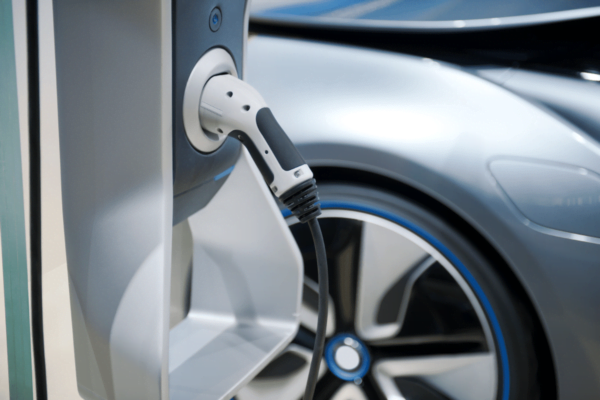
-
HYBRID ELECTRIC VEHICLES WITH PLUG-INS
PHEVs are vehicles that use both an internal combustion engine and an electric motor. PHEVs can be driven in a variety of modes, including ICEV, BEV, or both. The battery, like BEVs, can be charged by external power sources. The internal combustion engine drives the electric motor as needed and can recharge the battery while it is running.
-
HYBRID ELECTRIC VEHICLES
Hybrid electric vehicles (HEVs) include an internal combustion engine as well as a smaller-capacity electric motor/battery combo. External charging of the battery is not possible because the battery is charged through regenerative braking or by the internal combustion engine. HEVs currently outsell all other types of EVs. HEVs, on the other hand, cannot be deemed ‘electrified’ forms of transportation because they cannot be charged with an external power source. The European Union, for example, does not include HEVs in its definition of “alternatively powered cars.”
Opportunities
-
Technology:
EVs outperform conventional ICEVs in terms of technology and performance. Induction motors are preferable in terms of engineering because of their increased energy efficiency. In comparison to ICEVs, which have a maximum tank-to-wheel energy efficiency of 30 per cent, EVs have a wall-to-wheel efficiency of more than 77 per cent. Induction motors are also more reliable than internal combustion engines since they require fewer components, resulting in fewer failures and cheaper maintenance costs for EVs compared to ICEVs. EVs’ lower centre of gravity provides increased stability and control, which, along with superior braking systems, makes them more reliable and safer. EVs enable software to replace mechanical solutions to various EV driving challenges, which improves vehicle performance in a variety of ways. -
Pollution:
Because EVs lack an internal combustion engine, they emit substantially less noise pollution. EVs have no tailpipe emissions since no exhaust gases are emitted during operation, producing almost little air pollution to the local environment. Furthermore, because there is no need to keep the engine running, unlike combustion engines, EVs operate better in high traffic and congestion. As a result, the overall pollution from EVs is mostly caused by the production of energy for recharging the battery, which is determined by the local energy mix. However, direct emissions (including air pollutants emitted during the combustion process) are generally fewer in EV use than in ICEV use when properly run. Even when electricity is generated by the combustion of fossil fuels, air pollution can be decreased more effectively at the power plant level than at the individual car level. -
Emissions:
Because EVs are more energy-efficient, they have reduced engine and driveline losses, resulting in better economic and environmental performance than ICEVs. EVs save the environment by emitting less pollution during usage and over their whole lives, depending on the energy mix. In 2018, a medium-size electric car emitted approximately 60% less CO2-equivalent emissions per kilometre than its ICE counterpart. EVs may reduce GHG emissions by 85 per cent when charged with 80 per cent renewable energy, SO2 and NOx emissions by 75 per cent, and particulate matter (PM) emissions by 40 per cent when charged with 80 per cent renewable energy. 12 With renewables becoming a more significant part of the energy mix, these savings are anticipated to expand much more in the future. -
Economy:
EVs also provide a possibility for many countries with no fossil reserves to become self-sufficient in terms of foreign oil and to construct flexible infrastructure based on renewable energy sources. Countries such as India, which is less industrialized but has tremendous economic growth potential, are also attempting to capitalize on the economic prospects provided by EVs through local production of EVs and batteries. Along with the various technological and environmental benefits that EVs provide, these initiatives can help capture potential economic gains and create local jobs. -
Growth Prospects:
Recent advancements, particularly in the field of electric vehicles, indicate a positive trend for the EV industry. With major automakers joining the race, electric car production and sales are projected to skyrocket in the coming years. In 2019, the worldwide electric car fleet reached 7.2 million, with 2.1 million units added that year. Despite a downturn caused by the COVID-19 outbreak in 2020, yearly EV sales are predicted to increase to almost 9 million units by 2025 and nearly 26 million by 2030, after which the fleet of petrol and gasoline vehicles will begin to decline. Electric passenger cars are expected to outsell internal combustion engine vehicles in global yearly sales by 2040.
Challenges:
EVs confront certain critical difficulties despite significant benefits and a bright growth prognosis. Higher purchase prices, a lack of supportive infrastructure and clean energy, and the requirement for a sustainable supply of material resources are some of the primary problems that must be addressed before EVs can be considered a reliable alternative for ICEVs.
-
Affordability:
Costs are the most important factor in determining market acceptance and customer approval. The cost of electric automobiles is higher than that of gasoline-powered vehicles. As a result, it is not unexpected that the bulk of electric vehicles is sold in high-income countries. Aside from China, the majority of EV sales are reported in OECD countries. Even inside the EU, only six Western European countries account for 85 percent of revenues. The broad adoption of passenger electric vehicles is only achievable when the purchase and ownership costs of electric vehicles are comparable to those of conventional diesel and gasoline vehicles. -
Charging infrastructure:
On the technical front, EVs are still evolving to provide the same performance and convenience as ICEVs. The combination of short-range capacity and a lack of charging infrastructure is a barrier to EV adoption, particularly in the case of personal vehicles. With most electric car batteries in the 50-70 kWh range, EV battery capacity is increasing. However, the majority of electric car owners charge their vehicles privately at home or at work. Along with advancements in battery technology, adequate charging infrastructure throughout road networks is required to encourage the widespread acceptance of EVs. -
Clean Energy:
The growing demand for electric energy is directly proportional to the increase in EV sales. EVs will not be “zero-emission” unless the electricity used to charge them is also. Using fossil-fueled electricity to power EVs implies transferring emissions upstream to the energy production stage. Energy production must be free of fossil fuels for EVs to be really emission-free. Renewable energy is predicted to grow considerably in the coming decades, with solar and wind power accounting for up to 80% of total energy consumption by 2050. However, with fossil fuels (coal, oil, and natural gas) accounting for 64% of all electricity produced globally, significant progress in decarbonizing the power industry is required. For countries that rely significantly on nonrenewable energy sources, ‘greening’ their energy generation is an equally crucial problem, alongside public adoption of EVs. -
Material resources:
While EVs emit no tailpipe emissions and can run on renewable energy, their manufacturing accounts for a large portion of their total lifespan environmental impacts. This is mostly because the materials used in EV batteries take greater work to extract. The most significant stage in terms of energy use and other aspects associated with the primary production of key and important metals, such as cobalt and nickel, is the material extraction and manufacturing of EVs. Furthermore, some of the material resources on which the EV system is based face supply problems due to geopolitical issues rather than a lack of availability. By 2030, EVs are expected to account for around 85 per cent of LIB demand (in terms of capacity), with the remainder being used in consumer electronics and stationary energy storage.
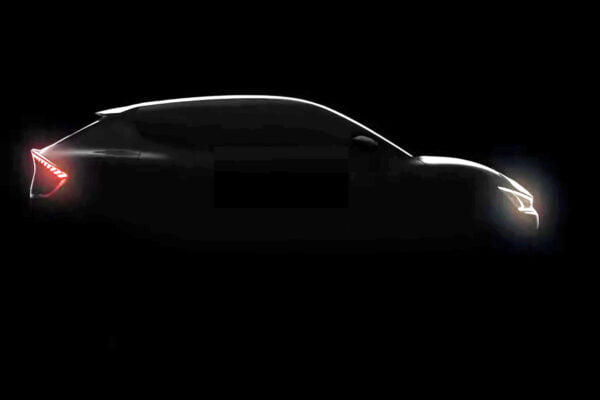
Thus, NTPC, India’s largest power utility, has successfully deployed its first EV charging station – designed in-house and capable of charging three electric cars at the same time – in Visakhapatnam.
Obviously, the most important aspect of the future of electric vehicles in India is the electric vehicles themselves.
In India, public transportation is paving the way for e-mobility to become more widespread. E-carts are mushrooming as an open vehicle in Indian metropolitan areas due to the cheaper cost of the activity and practical costs.
According to the latest projection from investment bank UBS, by 2025, 20% of all new automobiles sold globally would be electric. According to UBS, this will increase to 40% by 2030, and by 2040, nearly every new automobile sold globally will be electric. Read more details on Inventiva – https://www.inventiva.co.in
Edited by Prakriti Arora

